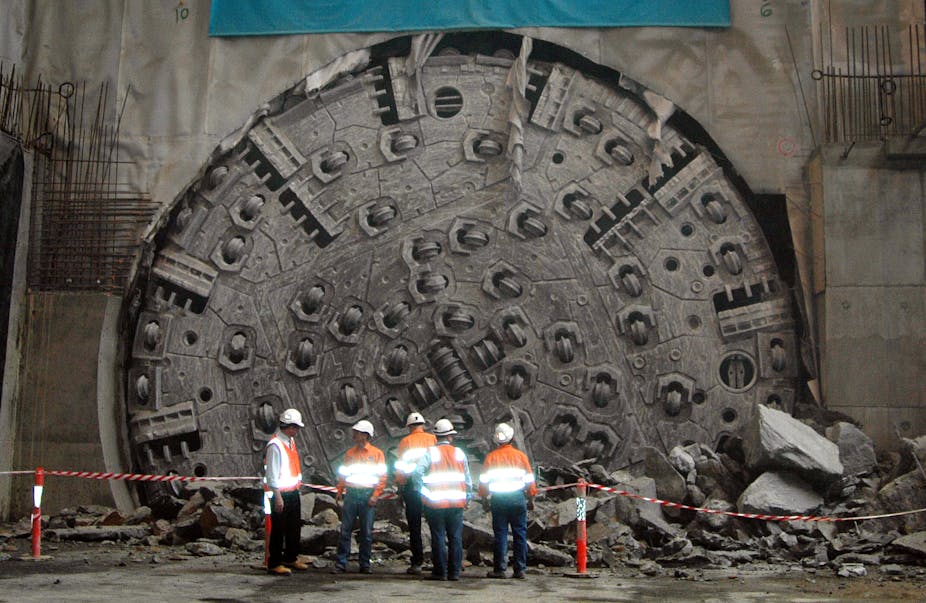Recent reports that the Queensland government may build its $2B Sunshine Coast hospital by using a public-private partnership appear to indicate a continuing love affair with this form of funding.
State and federal governments of all political persuasions are wrestling with how to deal with the ever-increasing burden of large infrastructure projects without draining the public purse.
Some even pride themselves on so-called fiscal responsibility, with policy directives that amount to limiting the debt levels to a fixed amount.
Debt is bad, the often-expounded rhetoric goes. This reluctance to incur debt has led to the burgeoning of PPPs by governments to deliver infrastructure projects which limit the call on public funds.
But just how successful have PPPs been in delivering value? And why do governments have such fear of debt?
We’ll get to that last point in a moment. But a good starting point in analysing the benefits and disadvantages of PPPs is by firstly placing a value on public infrastructure projects in areas such as water, transport, electricity, health and education, as well as a working out its return on investment.
Best practice
Increasingly in the private sector, the best-practice approach by large corporations entails embracing ‘real options’ methodology in evaluating investment projects.
This means that the standard Net Present Value (NPV) calculations used now includes the ‘option value’ of future projects contingent on the first taking place - that is, if one goes ahead, others will follow.
So a project that may be only mildly NPV positive (or indeed, even mildly NPV negative) is still viewed as potentially very worthwhile.
When it comes to public infrastructure, incorporating this basic construct of real options indicates the stated under-investment in infrastructure is even greater than most commentators lament.
The economic value question resoundingly calls for more government investment in public infrastructure.
But how do we fund for this? The question of financing such projects amounts to a decision on the costs and benefits across time. As the public benefits from such infrastructure investments, public ownership is needed to ensure access - something that is hard to fully contract or legislate through privatising infrastructure, or using PPP frameworks.
Which brings us to the dilemma of financing such large infrastructure projects from the public purse. But this is really a political quagmire, not an economic problem.
As benefits accrue across time from such investments, incurring debt to enable future generations to reap the returns is both equitable, and sound financial planning.
Unfortunately it may not be politically palatable for governments that are inherently limited in their vision by the tenure of their term.
The result is recourse to PPPs for the delivery for large scale public projects. This entails some form of a strategic alliance between public and private sector organisations to deliver some overall (typically infrastructure) project, with a bundling of risks that cannot be fully contracted over.
Such an organisational form, while still requiring of governments the underlying objective of delivering social value, accentuates the changing nature of public and private sector interactions.
Given the current debate around efficacy of such funding mechanisms, it is important to investigate where governance fits into the PPP story.
Governance of PPPs is necessarily more complex than corporate governance because of the multiple objectives, the number of principals involved and the risk of abuse of ministerial ‘oversight’.
Good governance has, and always will be, about the appropriate structures that ensure the alignment of management incentives with the principals’ objectives.
The multiple principals in the final analysis of any venture where the state is involved are its voters.
The elected government, however, is charged with delivering the principals’ objectives in multiple domains, and the process of political economy will yield a very blunt instrument (voting out unpopular governments) for ensuring the alignment of principals’ multiple objectives with those of the agents.
Nonetheless, the public furore around the terms on which many of the recent PPPs (such as Victoria’s desal plant) have been committed suggest a concern not only around the commercial acumen of governments making such calls, but also the lack of appropriately rigorous governance mechanisms.
As noted above, governments often favour PPPs to circumvent funding-constraints by hiding financial commitments off-balance sheet.
Appropriate governance
Unfortunately, they seem to want the political benefits of shiny new projects without the political cost of taxes/debt – even though PPPs lock taxpayers into substantial fixed payments that are equivalent to debt obligations.
The realisation of the commitments of previous governments merely highlights the lack of appropriate governance, not the specifics of whether the most appropriate funding options around infrastructure spend ought to be higher debt or taxes.
The reality of a depleted national infrastructure in myriad realms is going to require governments to consider how best to reinvest in the public interest.
Despite the extensive commentary on such a need, and the political rhetoric adopted that engaging the private sector by ‘transferring risk’ through mechanisms such as PPPs, there is a paucity of analysis in the public process that tests the validity of these claims.
We have been told that PPPs will deliver all the benefits to the populace without incurring the costs or risks that public sector involvement (or more traditionally contracting) would.
Moreover, we are told that the details of the terms on which such projects are negotiated are ‘commercial in confidence’.
“Trust me” is not a sufficient refrain when billions of dollars of taxpayers’ funds over many years are being committed.
Let’s move towards evidence-based policy. Demonstrate the need for public investment, then deliver the projects through the mechanisms that best deal with bundling risks, intergenerational equity, governance and political reality. Tell us the truth. We can handle it.

